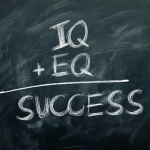The Dynamic Leader: 10 Skills to Enhance Your Leadership
Leadership is both an art and a science. While some may be born with natural leadership abilities, the truth is that dynamic leaders continuously cultivate and enhance their skills throughout their lives. If you’re looking to boost your leadership acumen, here are ten essential skills that can transform you into a more effective, inspiring leader, along with practical action steps to implement.
1. Emotional Intelligence (EQ)
What It Is: Emotional intelligence is the ability to recognize, understand, and manage your emotions and the emotions of others. Leaders with high EQ can create strong, empathetic relationships that foster teamwork and collaboration.
Action Step: Start by journaling your emotions every evening. Reflect on what sparked each feeling, and think about how you responded. This will help you develop self-awareness and improve your reaction to others.
2. Communication Skills
What It Is: Effective communication is crucial for leaders. It involves not only speaking clearly and persuasively but also being an active listener who understands others’ needs and concerns.
Action Step: Practice active listening by summarizing what others say before responding. This shows that you value their input and encourages open communication.
3. Strategic Thinking
What It Is: Strategic thinking is the ability to assess situations and foresee potential outcomes. Dynamic leaders can envision long-term goals and develop practical plans to achieve them.
Action Step: Spend time mapping out your organization’s vision. Break it into actionable steps and define key performance indicators (KPIs) to measure progress.
4. Adaptability
What It Is: In a rapidly changing world, adaptability is vital for leaders. The ability to pivot and embrace change can help you and your team thrive in uncertain circumstances.
Action Step: Embrace a growth mindset by seeking feedback and welcoming constructive criticism. This will help you become more flexible and open to new ideas.
5. Conflict Resolution
What It Is: Conflict is inevitable in any setting. Effective leaders address conflicts swiftly and constructively, using them as opportunities for growth and collaboration.
Action Step: Role-play potential conflict scenarios with a trusted colleague. Discuss various approaches to resolution and identify which strategies foster a positive outcome.
6. Decision Making
What It Is: A leader’s decisions shape the trajectory of their team and organization. Strong decision-making skills involve analyzing information, weighing options, and making timely choices.
Action Step: Train yourself to make smaller daily decisions quickly. This practice builds your confidence for more significant decisions and helps you develop a systematic approach.
7. Delegation
What It Is: Dynamic leaders know how to delegate tasks effectively. Passing responsibilities to team members not only empowers them but also allows you to focus on higher-level priorities.
Action Step: Identify three tasks that you can delegate this week. Choose team members based on their strengths and provide clear instructions while giving them the autonomy to complete the tasks.
8. Visionary Thinking
What It Is: A compelling vision can inspire and motivate a team. Leaders who articulate a clear and engaging vision create a shared purpose that aligns individual and organizational goals.
Action Step: Create a vision board that represents your goals and aspirations for your team or organization. Regularly reference this board during team meetings to keep everyone focused.
9. Resilience
What It Is: Resilient leaders can weather storms; they remain composed and maintain morale during challenging times. Their resilience inspires others to persevere and remain committed.
Action Step: Develop a self-care routine that includes activities to recharge and stay mentally and emotionally fit. Encourage your team to share their resilience strategies during team-building sessions.
10. Mentorship
What It Is: Great leaders are also mentors. By fostering the growth of others, dynamic leaders create a culture of learning and development within their organizations.
Action Step: Establish a mentorship program where experienced team members guide newer employees. Set specific goals for the mentorship relationships to ensure accountability and progress.
Conclusion
Becoming a dynamic leader doesn’t happen overnight. It requires dedication, self-awareness, and a willingness to engage in continuous learning. By working on these ten skills, you will not only enhance your effectiveness as a leader but also inspire those around you to reach their potential.
Remember that leadership is not just about driving results; it’s about guiding others on their journey. Challenge yourself to actively implement these action steps and watch how your leadership style transforms.
As you embark on this journey of dynamic leadership, remember the words of John Quincy Adams:
“If your actions inspire others to dream more, learn more, do more, and become more, you are a leader.”
For more insights and inspiration in your leadership journey, follow Kevin on Instagram at @KSteineman.
You might also like
More from Leadership
10 Essential Traits to Look for in a Leader
10 Essential Traits to Look for in a Leader Leadership isn't just a position; it's a set of qualities and traits …
5 Leadership Skills That Can Transform Your Organization
5 Leadership Skills That Can Transform Your Organization Effective leadership is often the cornerstone of a successful organization. Whether you're managing …
The Impact of Leadership Styles on Organizational Success
The Impact of Leadership Styles on Organizational Success Leadership is often described as the art of influencing and guiding others toward …

































